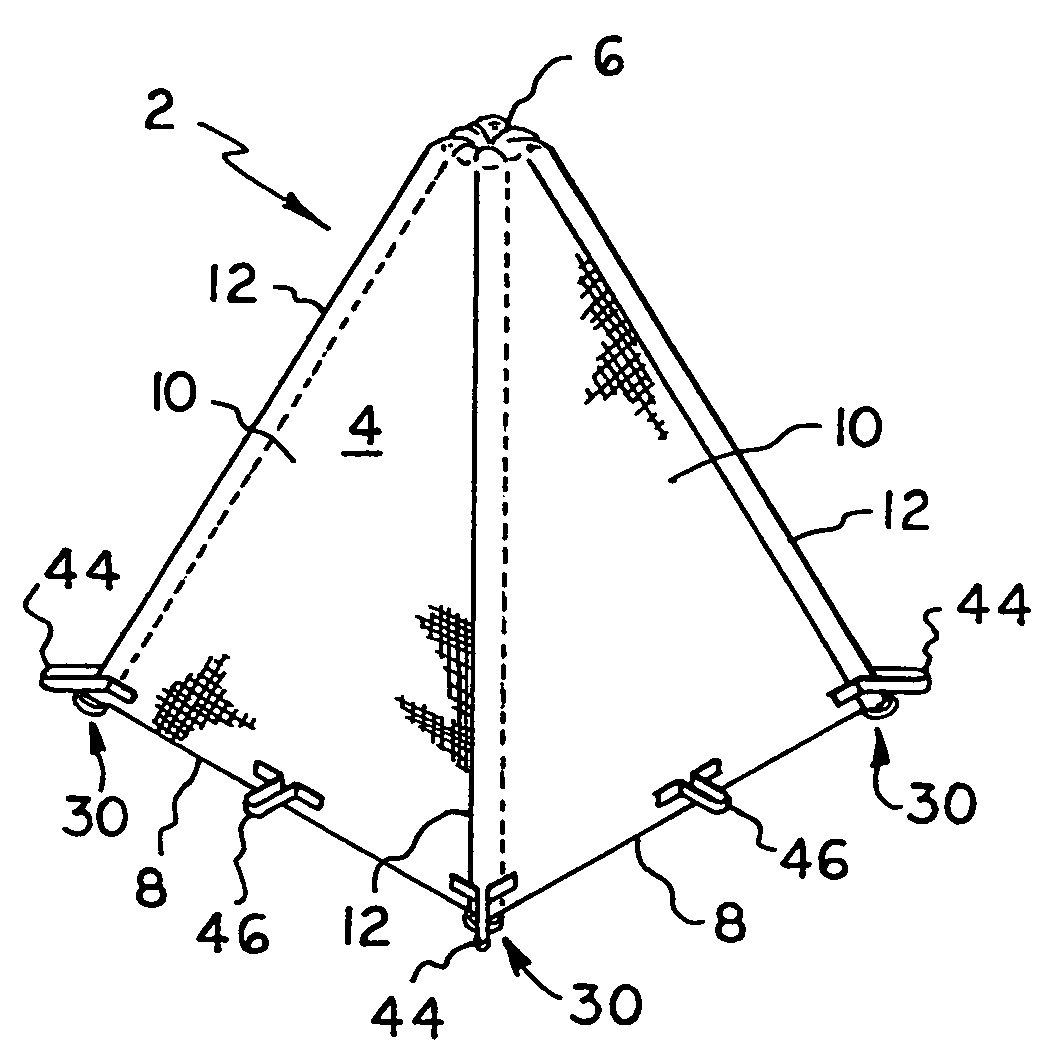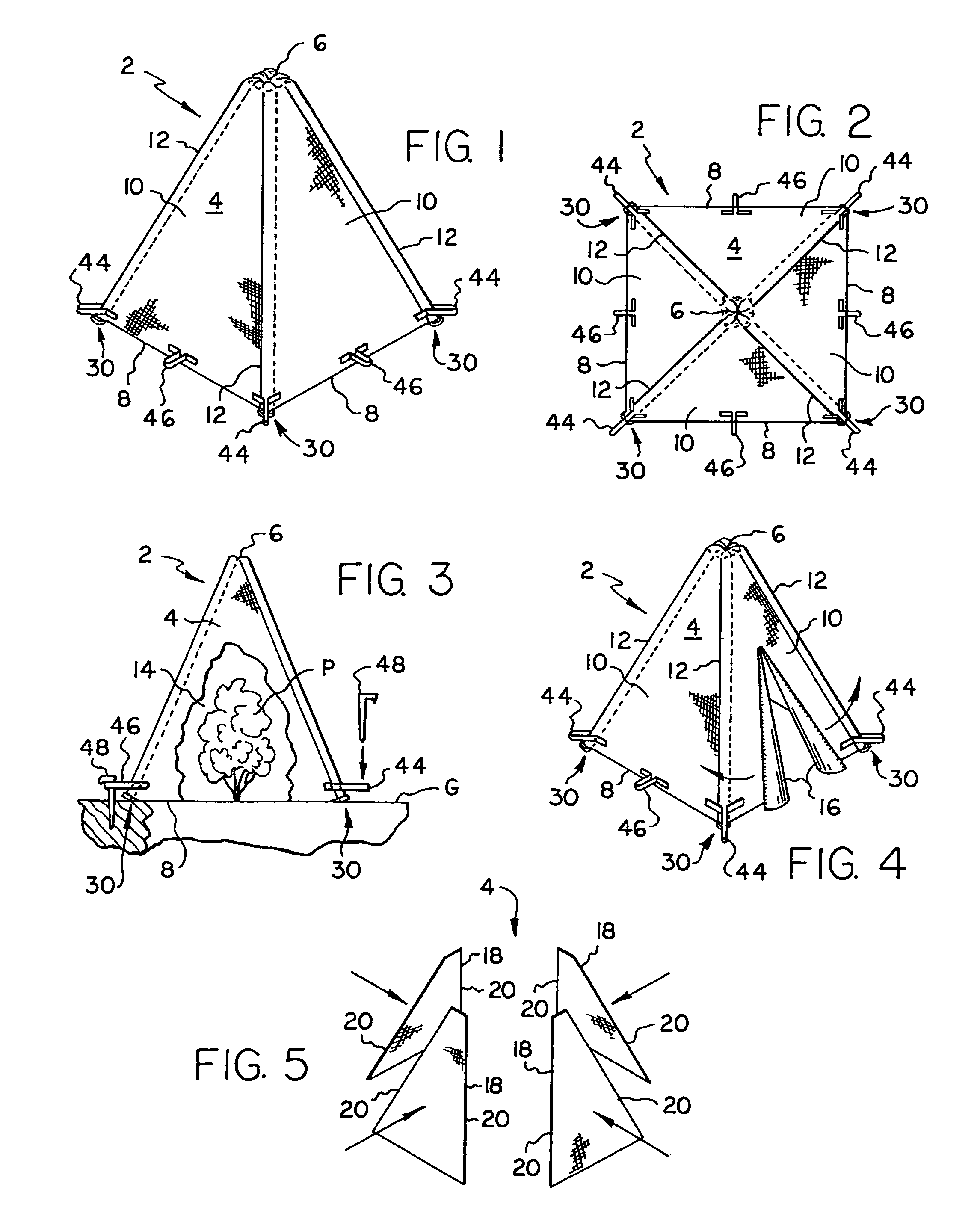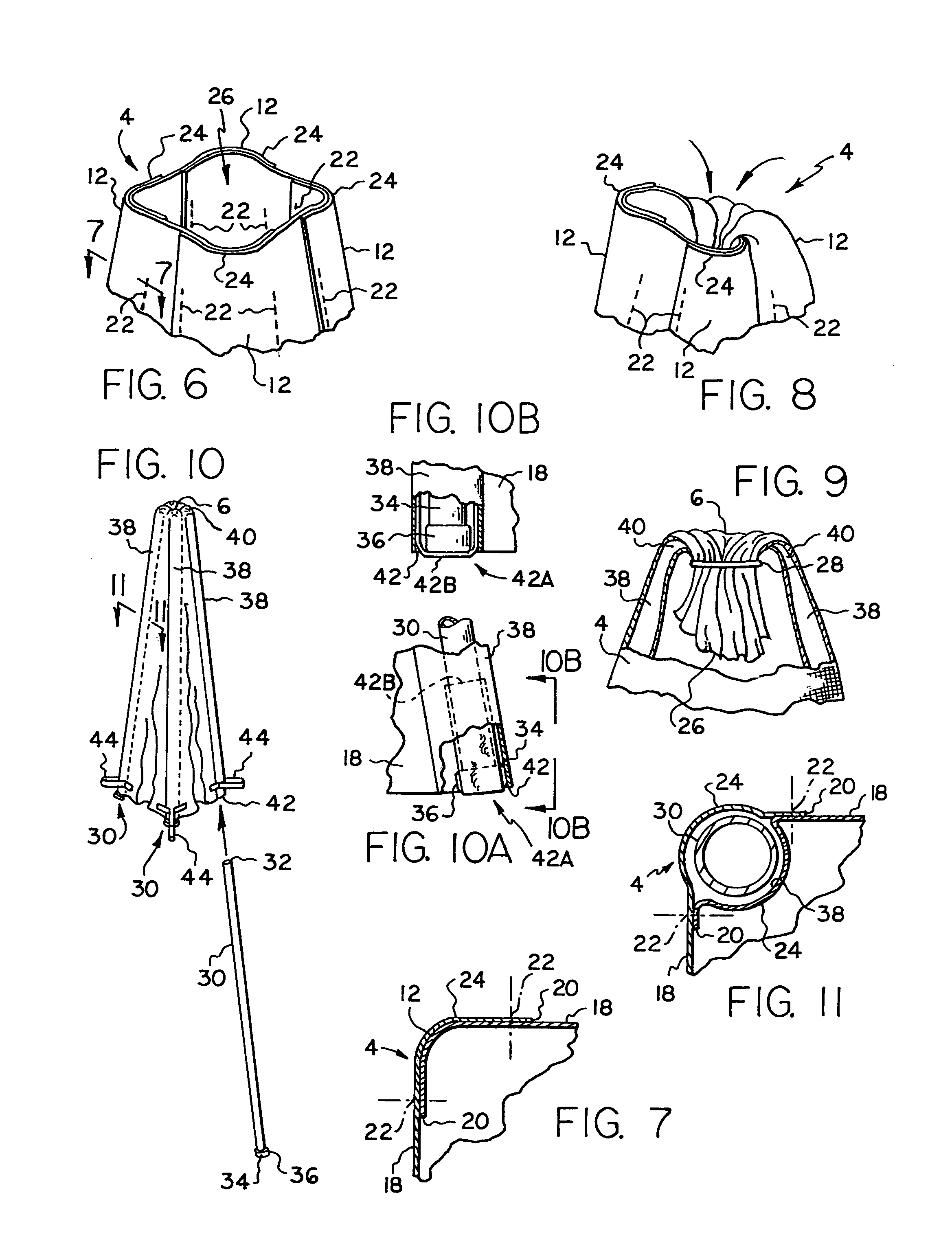Stowable plant protector
a plant protector and stowable technology, applied in the field of plant protection, can solve the problems of destroying and even killing vegetation, burlap plant wrappings, and not being particularly attractive to passersby,
- Summary
- Abstract
- Description
- Claims
- Application Information
AI Technical Summary
Benefits of technology
Problems solved by technology
Method used
Image
Examples
Embodiment Construction
[0033]Turning now to the Drawings, wherein like reference numerals signify like elements in all of the several views, FIGS. 1-3 illustrate a plant protector 2 constructed in accordance with a first exemplary embodiment of the invention. The plant protector 2 includes a cover 4 formed from a flexible material sheet that is preferably air permeable and light transmissive. High density polyethylene fabric (HDPE) is one material that may be used to construct the cover 4. Polypropylene fabric is another material that may be used. The cover 4 may have any suitable transmissivity level, depending on prevailing climate conditions and the plant species to be protected. By way of example only, an HDPE fabric sold under the name “SHADE RITE” is available from Green-Tek, Inc. of Edgerton, Wis. (www.green-tek.com) with shade factors ranging from 30% to 90%. Another shade fabric available from Green-Tek, Inc. is sold under the name “ALUMINET.” This material comprises HDPE with a metalized coating...
PUM
 Login to View More
Login to View More Abstract
Description
Claims
Application Information
 Login to View More
Login to View More - R&D
- Intellectual Property
- Life Sciences
- Materials
- Tech Scout
- Unparalleled Data Quality
- Higher Quality Content
- 60% Fewer Hallucinations
Browse by: Latest US Patents, China's latest patents, Technical Efficacy Thesaurus, Application Domain, Technology Topic, Popular Technical Reports.
© 2025 PatSnap. All rights reserved.Legal|Privacy policy|Modern Slavery Act Transparency Statement|Sitemap|About US| Contact US: help@patsnap.com



